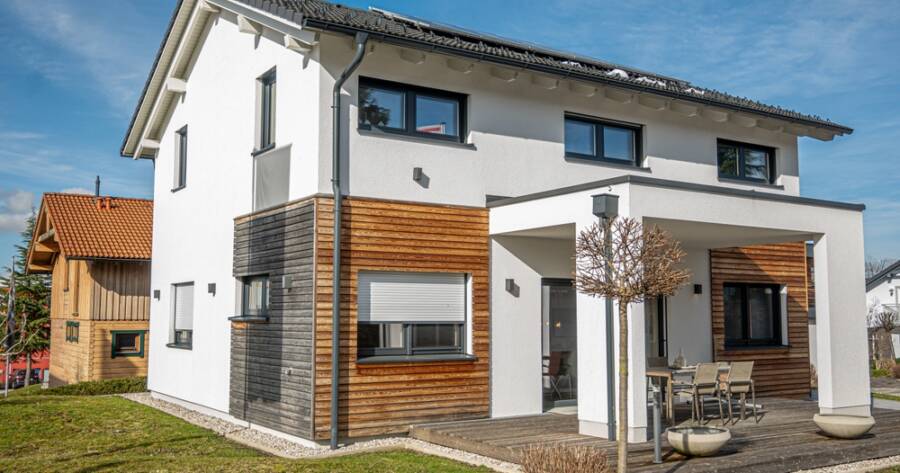Manufactured homes, once seen as a more affordable and less desirable housing option, have undergone significant transformations in recent years. As we move into 2025, these homes are gaining traction as a viable, comfortable, and sustainable choice for modern living. With improved design, advanced construction techniques, and better materials, manufactured homes now offer many of the comforts and amenities found in traditional homes, but with the added benefit of affordability and flexibility.
What is a Manufactured Home?
A manufactured home is a factory-built structure that is transported to a designated site and placed on a foundation. In contrast to modular or prefabricated homes, which are built in sections and then assembled on-site, manufactured homes are fully constructed in a factory, transported to the location, and placed there in one piece. Manufactured homes are often more affordable than traditional site-built homes, making them an attractive option for those looking to enter homeownership without the high price tag.
2025 Innovations in Manufactured Home Design
Manufactured homes in 2025 are much more than just a place to live. They have evolved into stylish, functional, and energy-efficient homes that provide all the modern amenities homeowners desire. Let’s explore some of the key innovations that have contributed to the rise in popularity of manufactured homes.
- Improved Construction Standards: One of the primary advancements in manufactured homes is the significant improvement in construction standards. New building codes and regulations now require that these homes meet or exceed the standards of traditional site-built homes. Enhanced insulation, better structural integrity, and the use of higher-quality materials contribute to the increased durability and longevity of manufactured homes.
- Energy Efficiency: As energy efficiency becomes a more pressing concern for homeowners, manufactured homes have adapted. In 2025, many manufactured homes feature energy-efficient appliances, upgraded insulation, and better HVAC systems. These improvements make it easier for residents to keep their energy bills low while maintaining a comfortable living environment. With the rising importance of sustainability, many manufactured homes also come with options for solar panels, energy-efficient windows, and water-saving fixtures.
- Stylish Interiors: The interiors of manufactured homes have come a long way from their humble beginnings. Today’s manufactured homes boast open floor plans, contemporary finishes, and stylish designs that rival traditional homes. In 2025, features such as high-end kitchen countertops, modern cabinetry, walk-in closets, and spacious living areas are common. Many manufacturers offer customizable floor plans, allowing homeowners to personalize their space and create a home that suits their specific needs and tastes.
- Smart Home Features: Manufactured homes in 2025 are integrating cutting-edge smart home technology, making them even more comfortable and convenient. From smart thermostats and energy-efficient lighting to advanced security systems and voice-activated appliances, these homes are embracing the latest tech trends. Homeowners can easily manage their home’s temperature, security, and lighting, all from their smartphones or voice assistants, adding a layer of convenience to everyday life.
The Benefits of Living in a Manufactured Home
- Affordability: One of the biggest draws of manufactured homes is their affordability. With the rising costs of traditional homes, many people are turning to manufactured homes as a way to own property without taking on significant debt. Manufactured homes can be much more cost-effective, especially for first-time homebuyers or those looking to downsize.
- Faster Construction: Manufactured homes are built in a factory setting, which means they can be completed in a fraction of the time it takes to construct a traditional home. This means that once a site is prepared, homeowners can move into their new homes much quicker, reducing the wait time associated with homeownership.
- Sustainability: As we move into an increasingly eco-conscious world, manufactured homes offer several sustainable benefits. Many homes are built with energy-efficient materials and appliances that reduce the home’s environmental footprint. In addition, they can be placed in locations that make the most sense for homeowners, including rural or undeveloped areas that might not otherwise have access to traditional housing.
- Mobility and Flexibility: One of the unique advantages of manufactured homes is their mobility. While many are placed on a permanent foundation, manufactured homes can be relocated if needed. This flexibility makes them a popular option for individuals or families who may need to move for work, family, or lifestyle reasons.
Embrace Comfortable and Affordable Living with Modern Manufactured Homes
Living in a manufactured home in 2025 offers a perfect blend of affordability, comfort, and modern design. With improved construction standards, energy efficiency, and stylish features, manufactured homes are becoming a popular choice for homeowners seeking an affordable yet comfortable living solution. Whether you are looking to purchase your first home, downsize, or embrace a more sustainable lifestyle, manufactured homes provide a flexible, convenient, and cost-effective option for modern living. As more people discover the benefits of manufactured homes, it’s clear that they will continue to be an important part of the housing landscape in 2025 and beyond.

